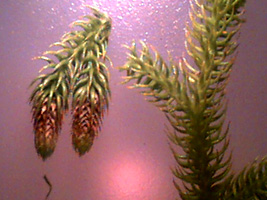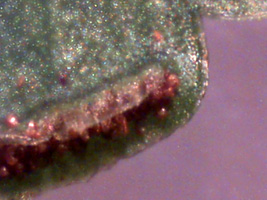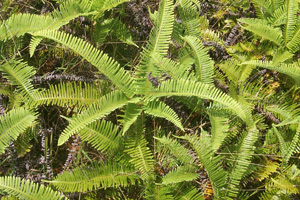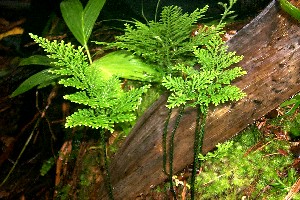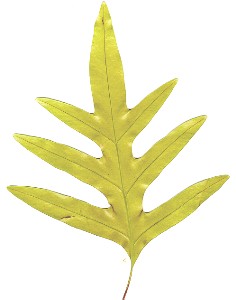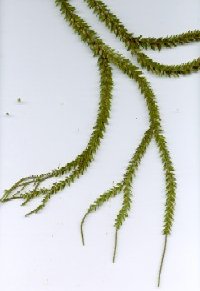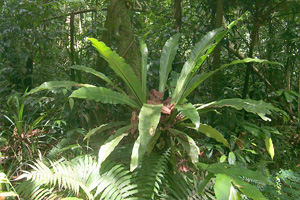SC 250 Botany Fall 2000 Midterm Examination
Answer all questions on your own paper.
Short Answer:
- In a single sentence, what is ethnobotany?
- Which type of botanist classifies plants?
- A botanist named Linnaeus wrote a "flora". In botany class, what is a
flora?
- Dr. Balick spoke of a disease called Susta. He explained that susta is an example
of a particular class of diseases. Susta belongs to what class of diseases?
- Give the name of a disease in your own culture that is in the same class as susta.
- For what disease is quinine used?
- What key parts of a plant should be collected for a herbarium specimen?
- Give one problem associated with invasive plants.
- Why is false sakau, Piper auritum, considered a threat to Pohnpei?
- What distinguishes Prokaryotes from Eukaryotes?
- What shape is a cocci bacteria?
- Cyanobacteria "threads" contain heterocysts. What is the function of the
heterocyst in cyanobacteria?
- What special type of cell can bacteria form to enable it to survive long periods of time
exposed to harsh sunlight, high heat levels, or chemical attack?
- A population at risk of contracting the diplococcus bacteria Neiseria gonorrhoeae
is also at risk for what other modern and far more deadly disease?
- What is a pilus and what does a bacteria do with its pilus?
- About how many years ago did bacteria arise on this planet?
- What is a thermoacidophile bacteria resistant to?
- Name two ways that a bacteria can reproduce.
- Which is your favorite bacteria?
- Which organism lives in a "glass house?"
- Euglena has special abilities both with the lights on and with the lights off.
What are these special abilities in the light and in the dark?
- Spirogyra has only one method of asexual reproduction, what is that one method?
- [Language preservation question] What is the Kosraen name for Asplenium nidus?
- What is an indusium?
- How many files would you have to submit in order to turn in the following web page?
<html><head><title>Stinkhorn</title></head>
<body><h3>Stinkhorn</h3>
<p><img src="stinkhorn01.jpg" width="200"
height="266">
<img src="stinkhorn02.jpg" width="200"
height="266"></p>
<p>Stinkhorn photographed in Nantipw-Lewetik Nett, 21 November 1999 by Dana Lee
Ling.</p>
<p><a href="../botany.html">Botany home page</a></p>
</body></html>
Longer answer (multi-sentence)
- What unique compounds do fungi and plants separately possess that make it unlikely that
plants evolved from fungi (or that fungi evolved from plants)?
- What benefits do fungi and plants each obtain from a mycorrhizal association?
- The sporophyte for mosses could be considered an epiphyte of a sort. Explain why.
- In what ways are the mosses of bryophyta "primitive" compared to other plants
such as lycophyta and pterophyta?
- In what ways are the mosses of bryophyta "advanced" compared to protists such
as chlorophyta?
- List some of the common features found in chlorophyta (green algae), bryophyta (mosses),
and the seedless vascular plants (lycopodium, ferns).
Sketching
- Draw a sketch of a spirogyra including the cell wall and the chloroplast on your
paper. Label the parts of the Spirogyra.
- Sketch, to the best of your ability, a Cyathea nigricans on your paper.
Images
- Completely label the parts of the bryophyte seen on the left below.
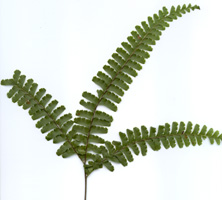
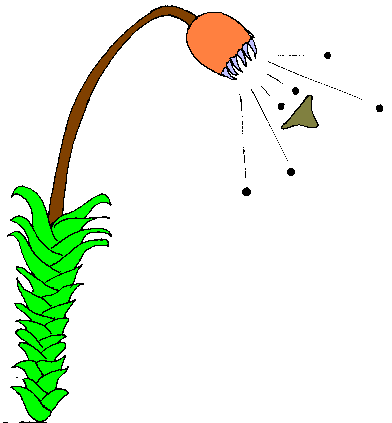
- Label the parts of this fern frond seen at the above right.
- Matching. You can use an image more than once.
- _____ Asplenium nidus
- _____ Basidiomycetes
- _____ Dicranopterus linearis
- _____ epiphyte
- _____ indusium
- _____ Lycopodium cernuum
- _____ Lycopodium phlegmaria
- _____ Phymatosorus scolopendria
- _____ saprophyte
- _____ sorus
- _____ strobili
Botany home page
Lee Ling home
COM-FSM home page


